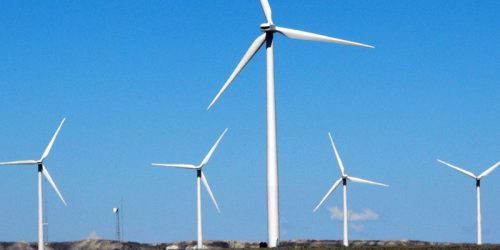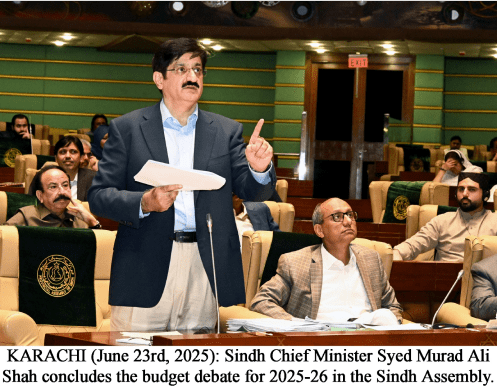The writer is a former member of the Energy Planning Commission and author of ‘Pakistan’s Energy Issues: Success and Challenges’.
Recently an agreement has been signed between a section of IPPs and the government towards resolving the undue and high cost of generation charged by the IPPs.
Two separate agreements have been made, one with Wind IPPs and the other with Furnace Oil IPPs (FOIPP). There has been a mixed reaction from experts/analysts.
The most extensive agreement that has been made is with Wind IPPs and the most egregious and violating tariff has been in this sector as we will see later in this space. First, the major clauses of the agreement with Wind IPPs: debt-tenor to be extended by five years and LIBOR spread reduced by 50-75 points, while KIBOR spread by 100-125 points. Then, O&M expenses reduced by 20-25 percent; and insurance premium reduced in the operational years. Delayed payment interest rate to be reduced. Return on Equity during Construction to be reduced to 13 percent. There is some confusion about reduced RoE on total investment to 12 percent on foreign equity and 17 percent local equity. For oil and gas plants, verification of thermal efficiency/heat rate is to be there, and any saving would be shared according to a formula.
The main corrections that are required are in the area of financing, RoE and interest rates. All costs are translated into these two financial parameters. There is confusion on RoE reduction; some newspapers have reported that RoE would be reduced prospectively by three percent. However, the signed agreement with WPPs does not mention any such reduction. If this is indeed the case, then it may be considered as a significant achievement.
RoE of 12 percent for foreign investments and 17 percent for local currency component/projects has been negotiated. It is not clear if this will apply prospectively to existing WPPs or if it will be a general policy. The existing RoE policy rate is 17 percent for renewables and 15 percent for all others. There is no distinction of local or foreign currency. All get indexation in USD.
Local currency projects/components lost indexation with USD which was really unreasonable but got a higher RoE, which compensates for the rupee depreciation. The government has offered two main concessions – measures to settle IPP receivables; and lifting of more energy from WPPs which is otherwise wasted by NTDC transmission congestion issues.
A breakdown of a typical wind power tariff on existing plants: April-June 2020, total tariff is Rs 26.39/kWh – out of which O&M is Rs3.0875, RoE is Rs8.5049, debt repayment and interest is Rs14.00. One would be surprised to learn that the wind power tariff is around Rs25-26 per unit for the already installed WPPs under the 2013 tariff as against Rs6 for new power plants under the new tariff.
Admittedly, wind power cost and tariff were high internationally and have come down only recently and the new and old tariff is not comparable. On the other hand, wind tariff under the 2013 prices was unreasonably high – 60-100 percent higher than the international prices then. Knowledgeable circles, including this writer, kept protesting against such excessive tariff but Nepra and other relevant authorities did not pay heed. The Nepra-awarded wind power levelised tariff in 2013 was 13.52 USc as against 7.3 USc in Turkey, 7.78 in the US, 8 USc India, and 6.235 USc in South American countries. Similarly, the Nepra CAPEX based on which the tariff was calculated was unreasonably high; $2.4 million per MW as against $1 million per MW elsewhere – including India and the US. In Europe it was slightly higher at one million Euro per MW. In China, it was even under $1 million per MW (for further details, the reader is referred to my book ‘Issues in Energy Policy’, 2014).
Whose fault is such excessive tariff? Obviously, Nepra is the regulator and it did this, despite advice to the contrary. Nepra even did not even bother to engage third-party consultants or simply browse the internet and get the data from regional countries, Europe and the US.
An Appellate Tribunal is provided in our legislation; it has not been implemented yet but should be without further loss of time. Now that there is a combined Ministry of Energy, the appellate tribunal may be extended to the oil and gas sector too. We have seen how K-Electric has been playing with the legal system and obtaining stay orders against Nepra decisions. Courts take almost infinite time to hear and adjudicate the cases.
A lot of regulatory reforms need to be implemented. Public hearings have to be made more representative and meaningful. Normally, investors are well represented, and consumer interest is not adequately represented. Fortunately, internet meetings have been held by Nepra which managed to gather points of view from a diverse section of population. This should continue beyond Covid-19.
Fortunately, the volume of wind power purchases is a small 1000 MW or so. Had it been a large volume, the level of destruction could have been much higher. Imagine Rs26.34 per unit plus losses plus transmission and distribution cost, while average tariff is Rs16.00. Thus the scope of damage with unrestricted authority of the regulator is very high – and thus the overriding rationale for reasonable oversight. The new leadership at Nepra had no role in past policies and actions and should think about these needed reforms with an open and positive mindset.
While Nepra has been at the forefront, in the shadow, the PPIB has been guiding (or even misguiding) Nepra. Major reforms are also due in this organization. It has often been headed by a minister and literally no debate or discussion has been taking place in its board. Behind the door decisions have often been rubber-stamped by the PPIB board. Instead of a minister, an independent professional should be made chairman of the PPIB board. This should be part of the present government’s reform agenda.
A competitive market is the solution for all future energy investments, which is easier said than done. A voluntary electricity exchange (ala India, where two such exchanges are operating which are planned to be extended in market share) could gradually bring the electricity sector under competition. The proposed CTBCM does not, however, offer a good competitive footprint.
The issue should be deliberated upon by policymakers carefully. Competition can be introduced in many forms for new projects. Rules are already in the books for solicited projects which means price competition in awarding generation projects. Reverse Auction is being talked about by Nepra and AEDB for a long time now, but Nepra is continuing with its routine process. Somehow, there has been dislike or fear for competition. Also, some preliminary hard work has to be done to define project parameters.
It will not be easy to convert existing projects to a competitive market. For projects, which have paid off their debt, their prevailing tariff would be lower than the expected market prices and the power purchaser would stand to lose, as the latter will have paid a big share of project cost already. The committee should think through this issue before agreeing to any concrete terms on this issue.
Although the IPP agreement will cover only about five percent of power capacity, this template can be used for negotiations with other projects, especially those of CPEC. No doubt the present government is committed to reducing the energy tariff wherever it is feasible. It would be in the interest of IPPs to accept the agreed terms and follow it through with their side of stakeholders. Otherwise, there are a lot of illegalities that have been committed by IPPs and a frustrated government would be predisposed to take a harsher approach that may not be in their interest. The terms are mild and reasonable. Let all the parties get it through.






